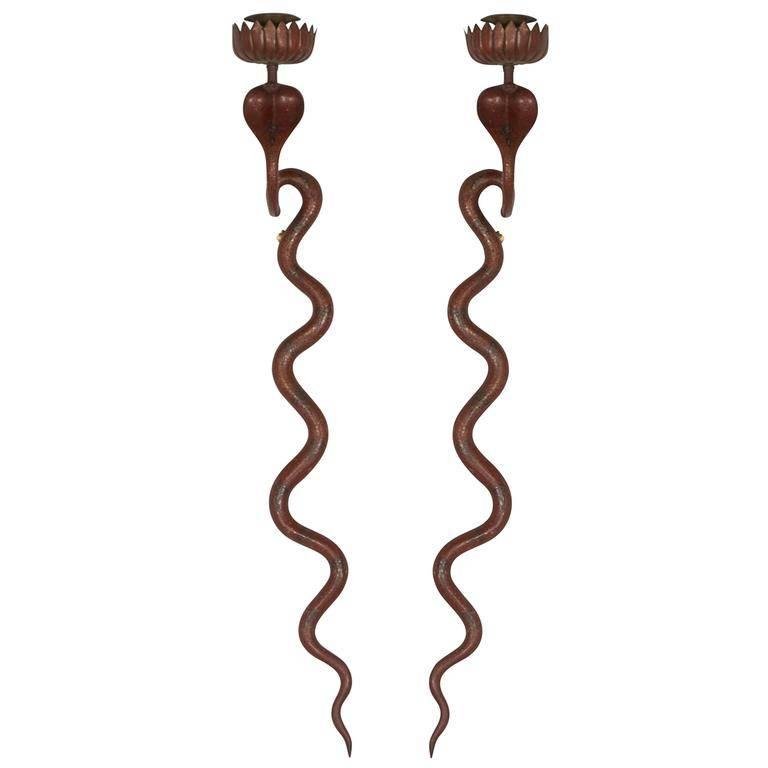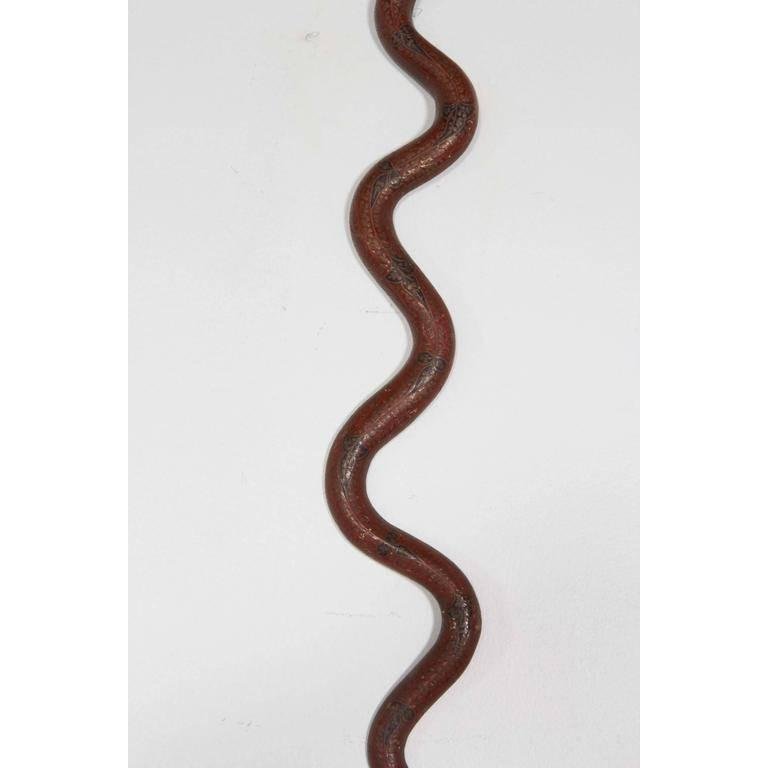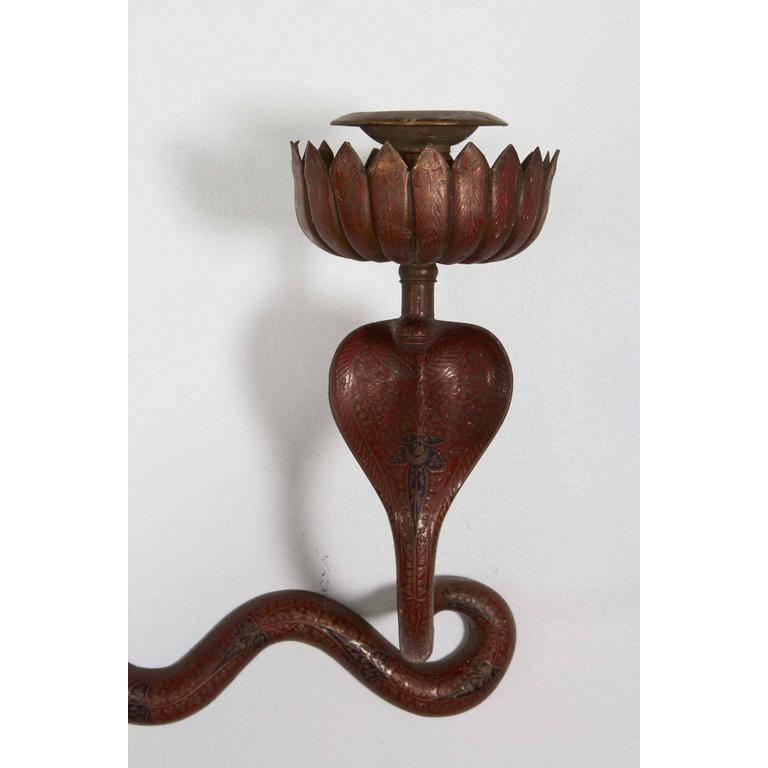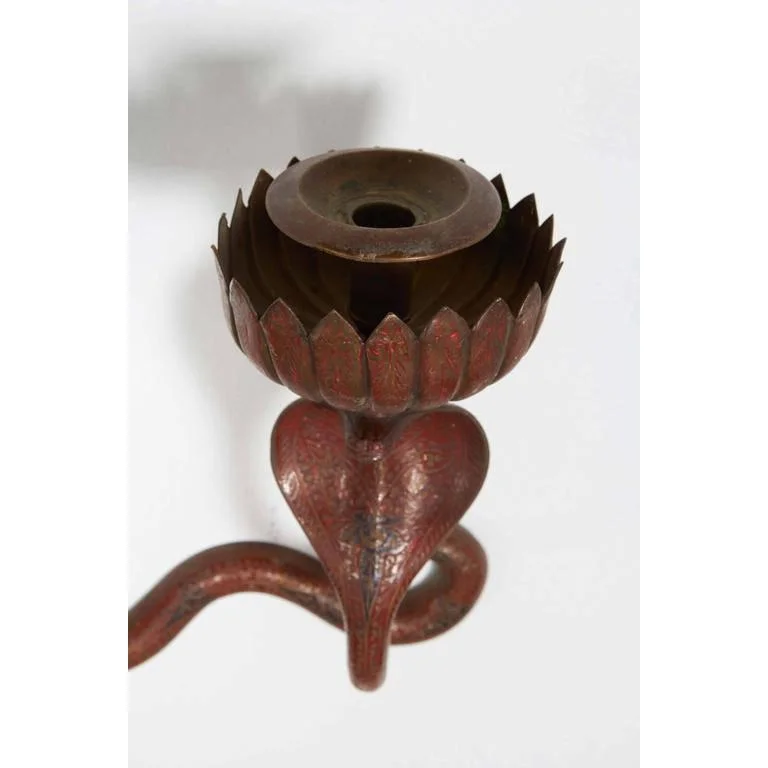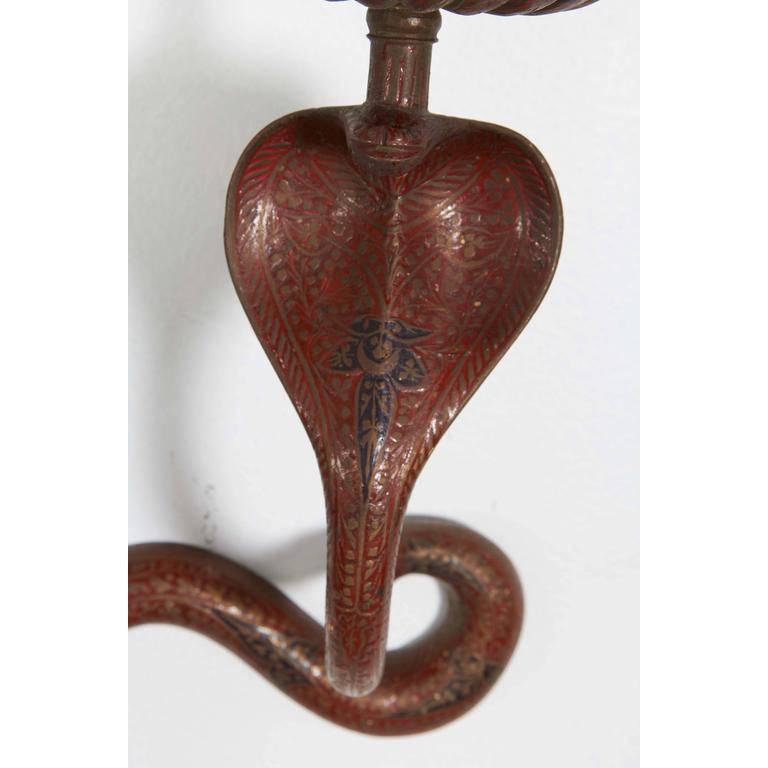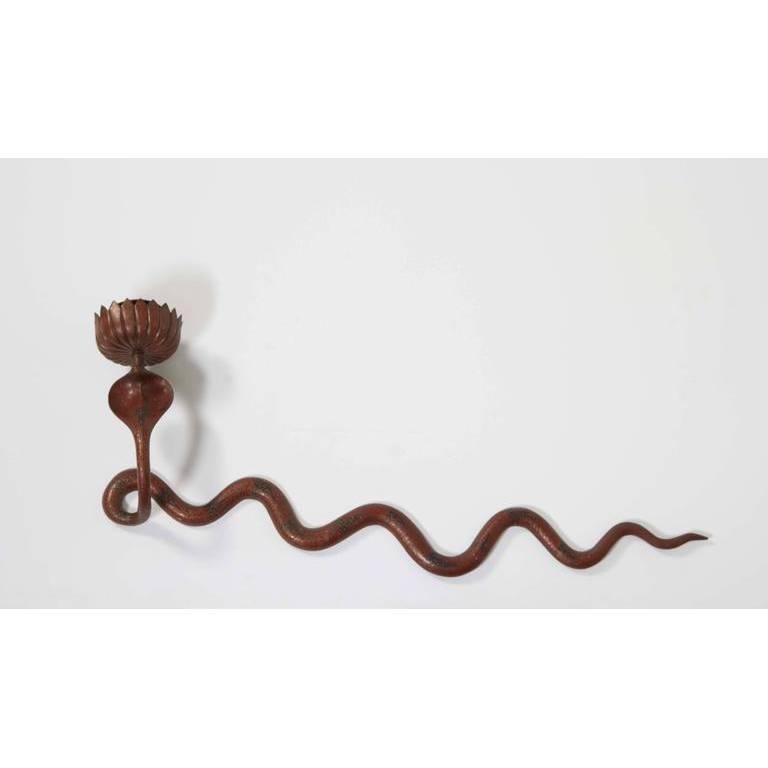American Neoclassical Revival
Edward F. Caldwell & Co.
A Pair of Theater Sconces
Gilt Bronze
New York City, ca. 1910s
DIMENSIONS
Height: 20 in (50.8 cm)
Width: 10 in (25.4 cm)
Depth: 16 in (40.64 cm)
ABOUT SCONCES
pair of American neoclassical revival sconces, crafted from patinated gilt bronze by Edward F. Caldwell & Co. in New York City, possibly designed for a theater. These sconces date to the circa 1910s and bear the Caldwell mark on the reverse. They are in excellent vintage condition, showing age-appropriate wear and a beautifully developed patina.
ABOUT MAKER
Edward F. Caldwell & Co. was a prominent American design and manufacturing firm based in New York City, known for creating luxurious lighting fixtures, chandeliers, and architectural elements. Founded in the late 19th century, the company became one of the most recognized names in high-end lighting and decorative arts during the early 20th century. The firm gained a reputation for producing exquisite, custom-made lighting designs that often blended neoclassical, Art Nouveau, and Beaux-Arts influences. Their products were crafted with exceptional attention to detail, incorporating materials like brass, bronze, crystal, glass, and fine metals, and they became highly sought after by wealthy patrons and designers. Caldwell's fixtures were often featured in prestigious buildings, hotels, and private estates. Edward F. Caldwell & Co. was also well-known for its collaboration with top architects and designers of the era, including names like John Pierpont Morgan and Stanford White. The company’s chandeliers and sconces adorned grand spaces such as mansions, public buildings, and institutions, contributing to the opulent aesthetic of the Gilded Age and early 20th century American architecture. The firm’s legacy continued for many decades, even as it faced competition from other lighting manufacturers. Although the company ceased operations in the mid-20th century, the fine craftsmanship and elegant designs of Caldwell’s creations remain highly regarded by collectors and interior designers today. Their works are often seen in antique auctions and prestigious collections, cementing their place as icons of American design history.
$21,000
Mid-Century Modernism
Otello Rosa for San Polo
A SET OF
Ceramic Wall Sconce & Wall Art
A Pair of Personages from La Comedia dell’ Arte
Italy, ca. 1950s
ABOUT
These wonderful ceramic Wall Sconce and Wall Art by famous Italian artist Otello Rosa (1920-2007) for San Polo depict A Pair of Personages from La Comedia dell’ Arte. In excellent vintage condition, signed and numbered, American wiring.
DIMENSIONS
SCONCE WALL ART
Height: 10.25 inches Height: 10.25 inches
Width: 3.75 inches Width: 3.25 inches
Depth: 4.75 inches Depth: 5.25 inches
$3,200
Italian Mid-Century Modernism
Otello Rosa for San Polo
Pinocchio Wall Sconce
ca. 1950s
ABOUT
Otello Rosa (Italian, 1920 – 2007) is the author of this stylish Mid-Century Modernist wall sconce, depicting Pinocchio, the hero of the famous Italian fairy tale by Carlo Collodi.
DIMENSIONS
Height: 10.5 inches Width: 7.75 inches Depth: 4.25 inches
$950
Italian Art Deco
A Pair of Wall Sconces with Nubians
Hand-Carved Painted Wood
ca. 1920s
DIMENSIONS
Height: 18 inches Width: 11.5 inches Depth: 5.5 inches
ABOUT SCONCES
This outstanding pair of hand-carved and painted wood sconces in the Venetian taste, with male and female Nubians each holding a cornucopia, is an Art Deco interpretation and tribute to the Golden Age of the 18th Century gilded interior decorations.
$6,800
Egyptian Revival
A Pair of Cobra Candle Wall Sconces
Enameled Brass
ca. 1920
ABOUT SCONCES
A pair of vintage enameled brass candle sconces, of sculptural form designed as serpentine cobras, evoking the Egyptian revival style, with lotus form bobeches. The sconces may be mounted on the wall either horizontally or vertically.
DIMENSIONS Height: 31 inches Width: 4.75 inches Depth: 5.75 inches
$6,500
German Cubist Art Deco
Attr.: Gerhard Schliepstein
A Pair of Bronze Wall Sconces
Berlin, Ca. 1925
Although unsigned, the essay for this extraordinary pair of wall sconces is attributed to Gerhard Schliepstein unanimously by all experts, as his unique stylization is very recognizable.
Crafted in patinated & polished bronze, their amazing design combines the plasticity of figurative sculpture with the sharp, angular lines of geometric design of the German Cubism in Art Deco heyday of the 1920s. These lean and elegant abstract representations of human figures are characteristic for his work, and have become really famous during the Art Deco era. Schliepstein’s works of the mid-1920s reflect his personal artistic reaction against Art Nouveau flowing lines by contrasting his own sculptural creations with sharp angles, lines and more fragmented, geometric character of cubism uniquely combined with streamlined Art Deco aesthetic.
Dimensions: Height (without candles): 12 inches (30cm) Width: 8 inches (20cm) Depth: 3 inches (7.5cm)
Gerhard Schliepstein (1886 -1963) was a German sculptor and designer, as well as a porcelain modeler from the Art Deco period. He obtained his education as a sculptor with Wilhelm Bayern, after which he attended the Academy for Plastic Arts in Berlin from 1907. After his studies, he started as free artist in Berlin-Friedenau; and from 1911, designed naturalistic porcelain figures that were executed at KPM Berlin; and later, at Schwarzburger Werkstätten für Porzellankunst in Unterweissbach, and Porzellanmanufactur Heubach in Lichte, as well. Gerhard Schliepstein mainly worked in porcelain and more rarely in alabaster and bronze, which makes the latter much more desirable.
Being one of the most esteemed German sculptors of the first half the 20th century, as well as prolific artist and very much in demand, Schliepstein created, among other things, building facades, furniture, lighting fixtures, figures and busts. Some of the furniture he designed, clock cases, lamps, wall sconces, desk sets and oil paintings have been preserved and nowadays are shown in many museums around the word – for instance, the Porzellanicon in Selb, the Bröhan museum in Berlin, Germany; and the Museum of Applied Arts and Sciences in Sydney, Australia, and Wolfsonian Museum in the USA.
sold
A Pair of
Vintage Egyptian Revival
Cobra Candle Wall Sconces
in Enameled Brass
Dimensions:
Height: 37 inches (94 cm) ~ Diameter: 4.5 inches (11 cm)
A pair of vintage enameled brass candle sconces, of sculptural form designed as serpentine cobras, evoking the Egyptian revival style,
with lotus form bobeches. Sconces may be mounted horizontally or vertically.
Very good condition, with age appropriate wear.
sold
SPAIN, XIX CENTURY
A Pair of Heraldic Silver Wall Sconces
for
Amadeo I, King of Spain
Dimensions:
Height: 11 inches Width: 10 inches Weight: 977.5g (each)
Unique - for the true lovers of real rarities! It is our pleasure to present to you this amazing pair of XIX century hand-hammered silver double-armed candle wall sconces in the Spanish Baroque style. The back plates are beautifully adorned with the Spanish royal crown and personal monogram of Amadeo I, the King of Spain. The heraldic composition is completed by the sculptures of angels, holding a laurel wreath in each hand, a symbol of royal power and victory. Probably, made by a special order, the sconces are unmarked but tested for silver. The original wooden bases of the back plates, intended to be mounted on the wall are preserved in a good condition on both candelabras, with all of the original copper studs that the silver parts are nailed to them. Very good antique condition, although there is a common minor wear consistent with age and use. Please refer to photographs attentively, as they are part of the description, as well. Is it possible that these silver sconces at one time had decorated the walls in the King's apartments ?
Amadeo I, the King of Spain (1870-1873)
Amadeo I (Italian Amedeo, sometimes anglicized as Amadeus) (30 May 1845 – 18 January 1890) was the only King of Spain from the House of Savoy. He was the second son of King Vittorio Emanuele II of Italy and was known for most of his life as the Duke of Aosta, but reigned briefly as King of Spain from 1870 to 1873. He was elected by the Cortes as Spain's monarch in 1870, following the deposition of Isabella II, and sworn in the following year. Amadeo's reign was fraught with growing republicanism, Carlist rebellions in the north, and the Cuban independence movement. He abdicated and returned to Italy in 1873, and the First Spanish Republic was declared as a result. Granted the hereditary title Duke of Aosta in the year of his birth, he founded the Aosta branch of Italy's royal House of Savoy, which is junior in agnatic descent to the branch descended from King Umberto I that reigned in Italy until 1946, but senior to the branch of the Dukes of Genoa.
The Spanish Royal Crown
The Spanish Royal Crown, known as Crown of Alfonso XII, is the symbol of the Spanish Monarchy and has been used in proclamation ceremonies since the 18th century. The current Spanish Royal Crown is the crown of the ruling Bourbon Dynasty. The Spanish branch of the House of Bourbon was founded by Philip V of Spain, Duke of Anjou, who was born in 1683 in Versailles. He was the second son of the Grand Dauphin, son of Louis XIV. The last time the crown was shown at a public ceremony was in the Cortes Generales during the swearing-in of King Felipe VI on 19 June 2014 after the abdication of his father, King Juan Carlos I. Since July 2014, the Crown and scepter are on permanent public display for the first time ever in the so-called Crown Room at the Royal Palace of Madrid.

































































